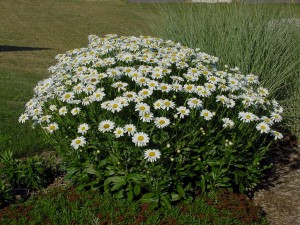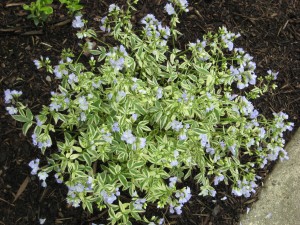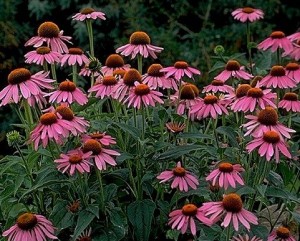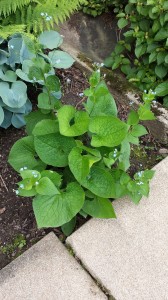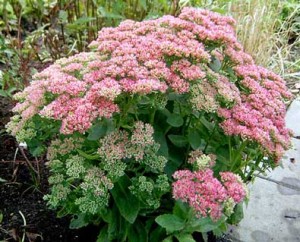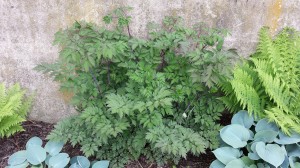Perennials for the Landscape
Perennials can provide many benefits to your landscaping. Since they grow back each year, perennials only need to be planted once. Most perennials are relatively low maintenance. They can be used as border plants, specimen plants or in groups within your landscape beds. Perennials come in a variety of sizes, shapes, colors, and textures. With proper selection, they can provide your landscape with interest all season long. Whether you have sun or shade, there is something for everyone. To help you get started in your selection, here are a few of our favorites.
Leucanthemum ‘Shasta Daisy’
Shasta Daisies are an easy to grow perennial great for borders or grouped together in landscape beds. They grow in a clump and produce flowers with white petals and yellow centers. Bloom time is early summer to fall. They range in size from 2-3 feet tall and 2 feet wide, depending on variety. Shasta Daisies are low maintenance and attract butterflies. They make a great cut flower. Grow best in full sun. Hardy in zones 5-9. Some companion perennials to plant with Shasta Daisies are Purple Coneflower, Bee Balm, and Stonecrop Sedum (tall).
Polemonium ‘Jacob’s Ladder’
Jacob’s Ladder is a clump forming perennial that is nice for shady areas of your landscape. The leaf color ranges from green to variegated. Bloom time is late spring/early summer. Deadhead the plant for repeat bloom. They range in size 12-30 inches high and wide, depending on variety. Grow best in part sun and part shade. Hardy in zones 3-9, depending on variety. Some companion perennials to plant with Jacob’s Ladder are Hostas, Ferns, and Brunnera.
Echinacea purpurea ‘Purple Coneflower’
Purple Coneflower is a perennial native to eastern North America. They grow in a clump and produce flowers that are purple-pink in color. Bloom time is summer. They can reach heights of 2-4 feet. Purple Coneflowers are low maintenance and attract butterflies and birds. They make a great cut flower. Grow best in full sun. Hardy in zones 3-9. Some companion perennials to plant with Purple Coneflower are Black-eyed Susans, Daylilies, and Shasta Daisies.
Brunnera
Brunnera is a clump forming perennial with heart shaped leaves that range in color from green to variegated. Bloom time is spring and the plants produce blue flowers. Brunnera are low maintenance. They work well as a border plant or as a specimen plant in your shade garden. They can reach heights of about 1 – 1 1⁄2 feet. Grow best in part shade. Hardy in zones 3-8. Some companion perennials to plant with Brunnera are Hostas, Ferns, and Bugbane.
Stonecrop Sedum
Sedum is a hardy perennial that comes in varieties that grow low or in a mat-like fashion or varieties that grow in a taller upright fashion. Low growing sedums are great for rock gardens. Taller varieties are nice as specimen plants or grouped together in landscape beds. Sedums are low maintenance, but varieties that grow upright should be divided every 3-4 years to help maintain compact growth. Bloom time is late summer through fall. Grow best in full sun. Hardy in zones 3-9. Some companion perennials to plant with upright Sedums are Ornamental grasses, Daylilies, and Black-eyed Susans.
Cimicifuga (Actaea)‘Bugbane’
Bugbane is a perennial that provides a nice vertical accent to shade gardens. The foliage varies in color from green to deep purple. They produce wands or spikes of flowers that bloom late summer to fall. Flower and leaf color varies depending on the variety. Bugbane will grow to about 4 to 7 feet tall and spread about 2 to 4 feet wide. Grow best in shade to partial shade. Hardy in zones 3-8. Some companion perennials to plant with Bugbane are Hostas, Ferns, and Jacob’s Ladder.
 Houp Landscaping – Enhancing Nature's Beauty
Houp Landscaping – Enhancing Nature's Beauty